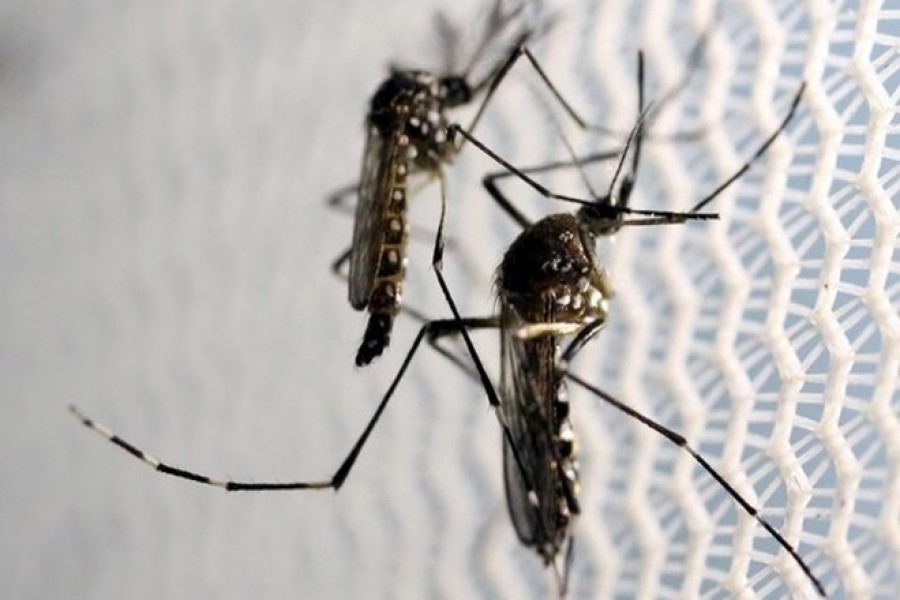
Published :
Updated :

The reappearance of dengue in metropolis Dhaka with eight fatalities and around one thousand recorded sufferers up to mid-July, as reported by the media, is really disturbing news. Ominously, the risks of deaths are rising due to the fever becoming haemorrhagic once again. There is a high risk of exacerbation of the situation due to a prolonged spell of rains that started from April. The rising trend of infections in the month of July is posing a serious threat to public health in the metropolis. Before the situation goes out of control as in the case of Chikungunya last year, the authorities should act fast.
As is well-known, the Aedes mosquito is the carrier of both dengue and chikungunya viruses. It breeds between January and August each year. According to a recent investigation carried out by the Dhaka South City Corporation, over one-third of the houses and other structures in areas under its jurisdiction contain the Aedes larvae. On the other hand, a survey conducted by the disease control branch of the department of health services also show that 67 out of 93 wards of the Dhaka North and South City Corporations are at high risk of a dengue outbreak. Clear and stagnant water in barrels and reservoirs at construction sites and rooftops, polythene bags, unused containers and boxes, plant-tubs, abandoned tyres, refrigerators, air conditioners and other spaces where water can remain stagnant for around five days become the breeding grounds for Aedes mosquito.
Although deaths and infections have slightly declined over the years, the situation still remains at an alarming level. Even during the previous year, there were as many as 2,769 recorded cases of the fever with eight deaths. The situation would become even more grave and precarious if chikungunya joins the fray along with the dengue outbreak following last year's development. Thousands of city dwellers were attacked by Chikungunya last year. Apart from fatalities, it left long-lasting physical and psychological impacts on survivors.
Under the circumstances, the authorities concerned should take up immediate preventive and curative steps to bring the situation under control. There is no alternative to launching an all-out mosquito eradication drive by the city corporations. Mass awareness should also be generated on the malaise through advertisements and publicity campaigns. Cleanliness drive can be undertaken at various schools, colleges and other educational institutions as well as offices and business establishments for wiping out mosquitoes. Different voluntary, social and non-government organisations can play a useful role in this area. Necessary guidelines should also be issued to the public and private hospitals, so that doctors and nurses remain alert and ready to cope with the evolving situation. Options should also be explored for ensuring easy availability of medicines as well as diagnostic services for patients. The health sector authorities should undertake an immediate stock-taking of the situation and draw up contingency plans for combating this imminent threat. It is only through coordinated and concerted efforts of all concerned that the scourge of mosquito-borne diseases like dengue and chikungunya can be minimised, if not completely eliminated.


 For all latest news, follow The Financial Express Google News channel.
For all latest news, follow The Financial Express Google News channel.